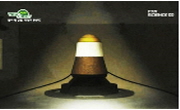본 연구는 사회주의국가 당·군 관계 이론들을 검토하고, ‘구조적 접근법’을 통해 북한의 당·군 관계 변화를 분석하고자 한다. 본 연구는 구조가 행위자에게 영향을 미친다는 전제하에, �...
http://chineseinput.net/에서 pinyin(병음)방식으로 중국어를 변환할 수 있습니다.
변환된 중국어를 복사하여 사용하시면 됩니다.
- 中文 을 입력하시려면 zhongwen을 입력하시고 space를누르시면됩니다.
- 北京 을 입력하시려면 beijing을 입력하시고 space를 누르시면 됩니다.

사회주의국가 당·군 관계 이론을 통해 본 북한: ‘구조적 접근법’을 중심으로 = North Korea on the Theories of Socialist Civil-Military Relations: Focusing on a ‘Structural Approach’
한글로보기https://www.riss.kr/link?id=A106425792
- 저자
- 발행기관
- 학술지명
- 권호사항
-
발행연도
2019
-
작성언어
-
- 주제어
-
등재정보
KCI등재
-
자료형태
학술저널
-
수록면
39-72(34쪽)
- DOI식별코드
- 제공처
-
0
상세조회 -
0
다운로드
부가정보
국문 초록 (Abstract)
본 연구는 사회주의국가 당·군 관계 이론들을 검토하고, ‘구조적 접근법’을 통해 북한의 당·군 관계 변화를 분석하고자 한다. 본 연구는 구조가 행위자에게 영향을 미친다는 전제하에, 두 개의 구조적 요인들―당-국가체제라는 사회주의 정치구조와 정치권력이 배분되는 권력구조―에 주목하면서 북한의 당·군 관계 변화를 설명한다. 당-국가체제라는 ‘사회주의 정치구조’는 상수처럼 현재까지 북한 당·군 관계에 영향을 미친 구조적 변수라면, ‘권력구조’는 몇 번의 변화를 거치면서 북한 당·군 관계에 영향을 미쳐 왔다. 본 연구가 사회주의 ‘정치구조’와 ‘권력구조’를 중심으로 분석하는 이유는, 이러한 구조적 변수가 당·군 관계 변화를 초래한 원인적 요인이라고 판단하기 때문이다. 본 연구에서는 북한 ‘권력구조’는 세 단계에 걸쳐―첫째, 해방 후 형식적 다당제 구조에서 ‘과두적’ 노동당 일당제로, 둘째, ‘과두적’ 노동당 일당제가 김일성의 ‘제한적 1인 지배’로, 셋째, 이 ‘제한적 1인 지배’가 ‘전면적 1인 지배’로―변했다고 주장한다. 본문에서는 이러한 북한 ‘권력구조’ 변화가 구체적으로 당·군 관계에 어떠한 영향을 미쳤는지 설명한다. 또한 이 ‘구조적 접근법’을 통해 북한 당·군 관계를 분석하면서, 사회주의국가 당·군 관계 변화를 설명하기 위해 발전되어 온 선행이론들 중 유용한 개념들도 적극적으로 이용한다.
다국어 초록 (Multilingual Abstract)
After reviewing previous theories of socialist civil-military relations, this study makes a ‘structural approach’ to analyze the change of North Korean party-military relations. Under the assumption that the structure affects actors, it employes t...
After reviewing previous theories of socialist civil-military relations, this study makes a ‘structural approach’ to analyze the change of North Korean party-military relations. Under the assumption that the structure affects actors, it employes two structural elements―first, socialist structure on the party-state system and, second, power structure on the distribution of domestic political power―to explain the change of the North Korean party-military relations. The first socialist structure as a constant variable has influenced the party-military relations from the early years of North Korea’s founding, while the second power structure has changed three times: from a nominal multi-party to an oligarchic one-party structure, to a limited personal rule, to absolute one. Based on the changes of the power structure, this study analyzes how the structural changes have influenced the party-military relations in North Korea. In addition, this ‘structural approach’ actively employs useful concepts from previous theories to explain the North Korean party-military relations.
동일학술지(권/호) 다른 논문
-
- 한국세계지역학회
- THUNT HTUT OO
- 2019
- KCI등재
-
- 한국세계지역학회
- 심규상
- 2019
- KCI등재
-
일본 지역포괄지원센터를 중심으로 한 커뮤니티 케어(community care) 고찰
- 한국세계지역학회
- 이진아 ( Jin-ah Lee )
- 2019
- KCI등재
-
한반도 통일과 평화·통일교육의 방향 연구: ‘평화’와 ‘안보’의 균형적인 관점을 중심으로
- 한국세계지역학회
- 여현철 ( Hyun-chul Yeo )
- 2019
- KCI등재





 KCI
KCI KISS
KISS






